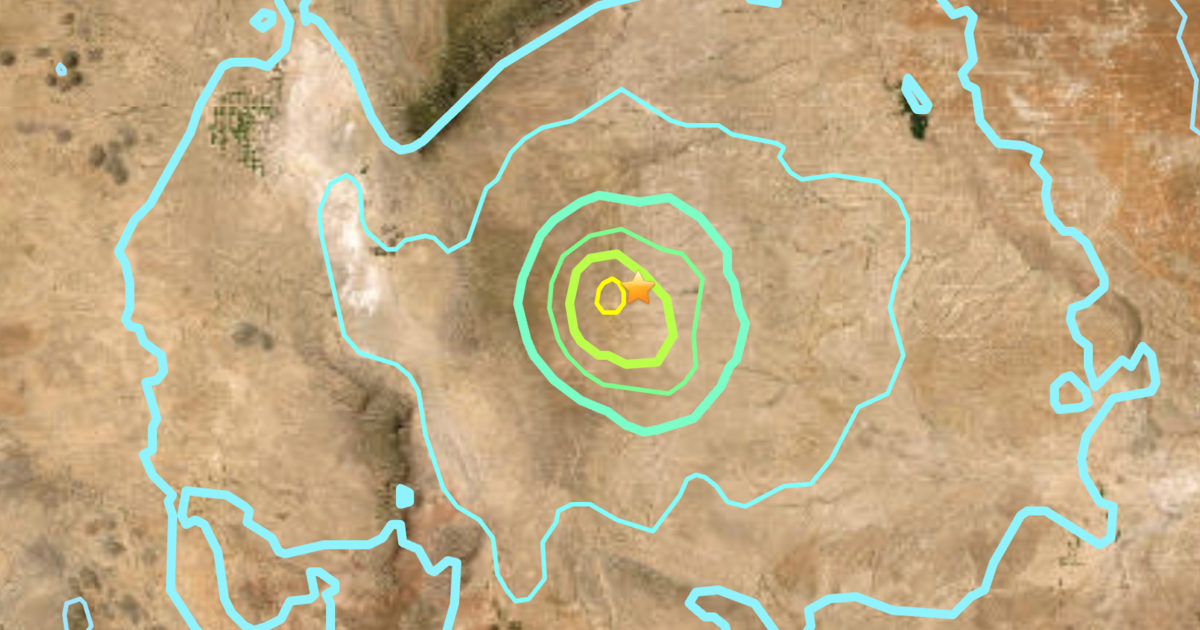Unraveling the Mystery: Three Earthquakes Rattle Remote West Texas
A series of earthquakes, including a significant magnitude-5.3 tremor, struck the remote regions of West Texas this week, sending shockwaves through an area unaccustomed to seismic activity. The quakes occurred near the Texas-New Mexico border between Monday and Wednesday, with no immediate reports of injuries or major damage. Geologists are scrambling to determine the cause of these unusual events in a geologically stable region, raising questions about potential links to human activity and future risks.
Seismic Activity in an Unexpected Location
The three earthquakes registered magnitudes of 4.6, 5.3, and 4.7 respectively, according to the U.S. Geological Survey (USGS). The strongest tremor, which struck at 3:32 p.m. local time on Tuesday, was felt as far as 200 miles away in El Paso and Albuquerque. While moderate by global standards, these quakes represent some of the strongest ever recorded in this sparsely populated region.
Dr. Elena Martinez, a seismologist at Texas Tech University, explained the significance: “West Texas sits on a relatively stable craton, unlike California’s active fault lines. A magnitude-5 quake here is equivalent to a much stronger quake in terms of geological surprise. It’s like finding a snowstorm in the desert.”
The seismic events occurred in an area known geologically as the Permian Basin, which contains:
- Some of the most productive oil and gas fields in the U.S.
- Thousands of active and inactive wells
- Extensive wastewater injection sites
Investigating Potential Human Causes
Scientists are particularly interested in whether industrial activities might have triggered the quakes. The Permian Basin has seen a dramatic increase in wastewater injection – a process where brine from oil production gets pumped back underground. According to USGS data, Texas regulators permitted over 2.3 billion barrels of wastewater injection in the region last year alone.
Mark Williams, a geophysicist with the Texas Bureau of Economic Geology, cautioned against jumping to conclusions: “While we know injection can induce seismicity, these quakes occurred at depths of 5-7 kilometers, much deeper than typical injection wells. We’re looking at all possibilities, including natural tectonic stresses.”
Historical context adds to the mystery:
- Only 12 earthquakes above magnitude 3.0 were recorded in this area between 1973-2007
- Since 2008, the region has experienced over 200 such quakes
- The current sequence represents the strongest cluster ever recorded
Assessing Risk and Community Impact
While damage appears minimal, the quakes have rattled residents in small towns like Mentone and Kermit, where few buildings are designed to withstand seismic activity. Local officials reported cracked foundations in some older structures and merchandise knocked from store shelves, but no major infrastructure damage.
The Texas Railroad Commission, which regulates oil and gas operations, has dispatched inspectors to review nearby injection wells. Meanwhile, the USGS has increased monitoring in the area, deploying temporary seismometers to better understand the ongoing activity.
Key concerns for researchers include:
- Whether these quakes represent a temporary anomaly or a new normal
- Potential for stronger aftershocks in coming weeks
- Need for updated building codes in previously low-risk areas
Broader Implications for Energy Production
The earthquakes come at a sensitive time for Texas’s energy industry, which produces about 43% of the nation’s crude oil. Environmental groups have seized on the events to call for stricter regulations on wastewater disposal, while industry representatives emphasize the economic importance of continued production.
Sarah Chen, spokesperson for the Permian Basin Petroleum Association, stated: “Our members follow all state regulations and employ best practices. If science shows we need to adjust operations, we will work collaboratively with regulators.”
Meanwhile, renewable energy advocates suggest the quakes highlight the need to accelerate Texas’s transition to wind and solar power. The state already leads the nation in wind energy production, but remains deeply tied to fossil fuels.
What Comes Next for West Texas?
Scientists expect weeks or months of analysis before reaching definitive conclusions about the quakes’ causes. The USGS has slightly increased its seismic hazard assessment for the region, though still considers major quakes unlikely.
For residents, the events serve as a wake-up call. Local emergency management officials are developing earthquake preparedness materials for schools and businesses, while geologists continue monitoring the area around the clock.
As research continues, concerned citizens can:
- Report any earthquake experiences to the USGS “Did You Feel It?” program
- Review emergency preparedness guidelines at ready.gov
- Attend upcoming community meetings about seismic risks
These mysterious West Texas tremors remind us that our understanding of Earth’s dynamics remains incomplete. As human activity and natural processes intersect in new ways, scientists and policymakers face complex challenges in balancing economic development with environmental stewardship.
See more Your Daily Weather


